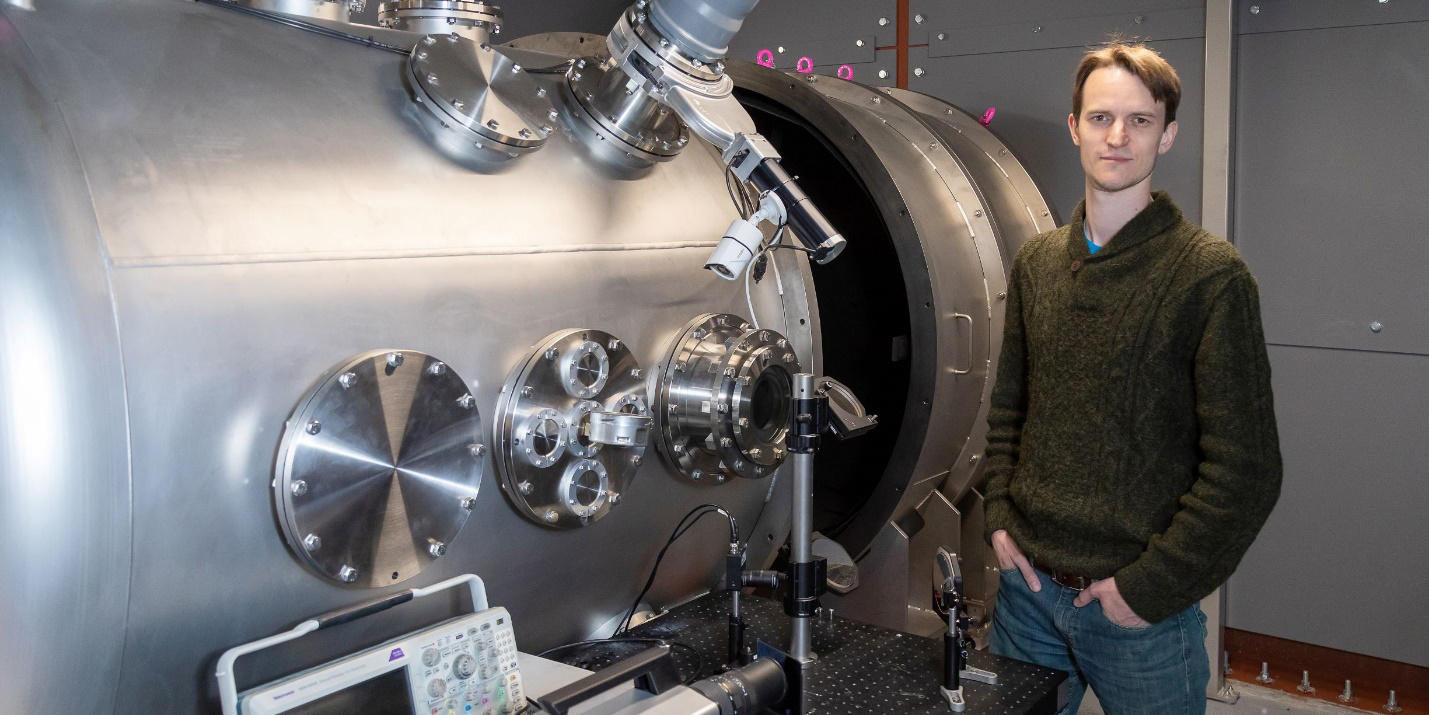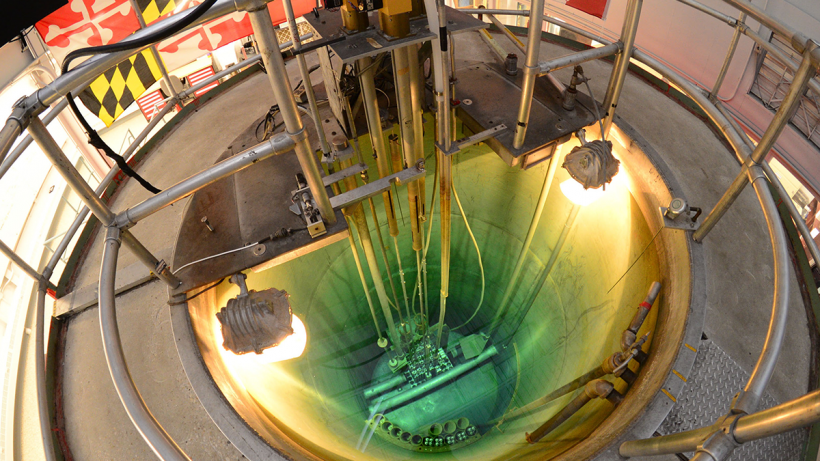First Light fires first shots from gun built for pulsed fusion

Inside a new steel-clad facility nicknamed “The Citadel,” First Light Fusion has installed a 22-meter two-stage gas gun—the third-largest such component in Europe.

A message from NV5, Inc.
Seconds Matter: Rethinking Nuclear Facility Security for the Modern Threat Landscape

Inside a new steel-clad facility nicknamed “The Citadel,” First Light Fusion has installed a 22-meter two-stage gas gun—the third-largest such component in Europe.

The National Reactor Innovation Center (NRIC) wants to hear from developers and end users interested in integrated energy systems for advanced reactors. Battelle Energy Alliance (BEA), the managing and operating contractor for Idaho National Laboratory, has issued a call for Expressions of Interest for a potential multi-phase demonstration program for innovative uses of nuclear energy, to be carried out by NRIC and the Crosscutting Technology Development Integrated Energy Systems (CTD IES) program. The final date for responses is May 21.

The United States is embarking on a new coordinated federal low-dose radiation research program. With guidance from the National Academies of Sciences, Engineering, and Medicine, the Department of Energy’s Office of Science will build a program that integrates the research of past decades, but without treading the same well-worn path. Instead, the new program will focus on how the scientific understanding of low-dose radiation can best be augmented, applied, and communicated.
More than 100 organizations, including the American Nuclear Society, have signed a letter to congressional leaders asking for a multi-billion dollar increase in the Department of Energy’s innovation funding to increase American competitiveness. The letter, dated May 4, was conceived by Third Way, a national think tank that champions modern center-left ideas.

Whitehouse

Crapo
Sens. Sheldon Whitehouse (D., R.I.) and Mike Crapo (R., Idaho), both members of the Senate Finance Committee, have released a discussion draft of the Energy Sector Innovation Credit (ESIC) Act, a technology-inclusive energy tax proposal to encourage innovation in the clean energy sector. (A one-pager on the proposal is available online.)

On April 26, as the ITER Organization announced that magnet assembly had begun with the April 21 placement of the divertor coil in the bottom of the machine, the organization also published an Image of the Week that bears an unmistakable—and unintentional—resemblance to the Olympic rings. The pre-compression rings were being prepped for installation in the ITER Assembly Hall when the serendipitous arrangement was captured by Bruno Levesy, a project manager at ITER.

Completing a 5,700-mile journey from Belgium, two 24-ton particle accelerators were delivered to NorthStar Medical Radioisotopes’ facility in Beloit, Wis., on April 22, the Wisconsin State Journal reported. Photos and a video of the accelerators being received at the facility are included in the report.

Is isotope science all sweetness and light? Recent headlines on research confirming the sweet taste of heavy water and the creation of the lightest isotope of uranium yet may give that impression. But the serious science behind these separate research findings has implications for human health and for the understanding of the process of alpha decay.

The U.S. Department of Defense is aiming to demonstrate a novel nuclear thermal propulsion (NTP) system above low Earth orbit by 2025. The Defense Advanced Research Projects Agency (DARPA) announced on April 12 that following a competitive solicitation process, it has awarded a contract to General Atomics Electromagnetic Systems (GA-EMS) for the design of the nuclear reactor that will power the Demonstration Rocket for Agile Cislunar Operations (DRACO). Blue Origin and Lockheed Martin will work on a parallel track to design a spacecraft tailor-made to demonstrate the NTP system.

Gao
Haiyan Gao, currently the Henry W. Newson Distinguished Professor of Physics at Duke University, will join the Department of Energy’s Brookhaven National Laboratory as associate laboratory director for Nuclear & Particle Physics starting on or about June 1, 2021.
Details: Gao, who has a long history in nuclear physics, will help develop BNL’s collective long-term vision for the next 10 years. She’ll also work across the laboratory and beyond to craft its emerging expertise at the future Electron-Ion Collider, a one-of-kind nuclear physics research facility that will be built at the lab over the next decade.

The health and safety of the public and protecting people from the consequences of a significant release of radioactive material has been a top priority since the early days of the civilian nuclear energy program. After World War II, it was realized that the core inventory of radionuclides is a potential hazard. From this knowledge, emergency planning zones (EPZs) for nuclear power plants were established.

The Department of Energy’s Office of Nuclear Energy is spreading the word about plans to build a tiny microreactor called the Microreactor Applications Research Validation & EvaLuation (MARVEL) project inside Idaho National Laboratory’s Transient Reactor Test (TREAT) Facility and have it in operation within the next three years. INL recently released a video that describes how MARVEL could help researchers and industry partners test, develop, and demonstrate the integration of a microreactor’s heat and electricity output with other technologies.

While scientists can tag migrating birds, mammals, and other animals to track their movements, the precise migration patterns of butterflies and other insects too small for tagging evaded scientists’ scrutiny for decades. That changed in 1996, when Leonard Wassenaar and Keith Hobson, working at the time as isotope scientists for Environment Canada, demonstrated that isotopic techniques could be used to determine the origin of individual monarch butterflies and deduce the species’ annual migration routes. Now, the same technique is being used to study other butterfly species.

Comparing matter to a “lush tapestry, woven from a complex assortment of threads,” physics writer Emily Conover traces the evolution of our understanding of the atom over the past century in the recent Science News article, “How matter’s hidden complexity unleashed the power of nuclear physics.” Conover uncovers how our vision of matter changed from that of a “no-nonsense plaid” to one of an “ornate brocade,” ultimately transforming nuclear physics from an arcane academic pursuit to something that forever changed the world.

Christine King is director of the DOE’s GAIN
The possibilities of new advanced nuclear for the future are undeniably exciting. For me, nuclear energy has provided a career filled with lifelong learning and a global community interested in collaboration. Not every industry is fortunate in this regard. As I look to this exciting future of nuclear, I keep coming back to this advice: “Begin with the end in mind.”
In November 2015, the Department of Energy established the Gateway for Accelerated Innovation in Nuclear (GAIN) for just that purpose. At GAIN, we get up every day to imagine what nuclear could be and identify concrete actions we can take to turn vision into reality. No doubt we have a long way to go, but a lot has changed in the short period of time since GAIN’s inception. Today, we are designing demonstration units to build within this decade. Soon, we will be commercializing and deploying these technologies.

TAE Technologies has announced that it has produced a stable plasma of over 50 million degrees celsius inside a fusion device using a beam-driven, field-reversed configuration. “By generating such stable high-temperature plasmas, TAE has now validated that the company’s unique approach can scale to the conditions necessary for an economically viable commercial fusion power plant by the end of the decade,” the company declared in its April 8 press release. The company added that the results indicate the design’s linear configuration improves plasma confinement as temperatures rise.

A research collaboration between Lawrence Livermore National Laboratory and the Air Force Institute of Technology (AFIT) has investigated how the neutron energy generated by the detonation of a nuclear device could affect the path and speed of an asteroid on a collision course with Earth by melting and vaporizing a portion of the asteroid. The research, which compared the deflection caused by two different neutron energies—14.1 MeV and 1 MeV, representing fusion and fission neutrons, respectively—is described in an article published by LLNL on April 8.

The nuclear reactors currently in operation in the United States are beginning to gray around the temples. Built decades ago using technology developed during the middle of the 20th century, these reactors have safely and reliably powered homes and businesses, but they produce waste that must be disposed of properly.

TRIGA International, the only supplier of TRIGA reactor fuel in the world, recently completed a major renovation project at its fuel fabrication facility in Romans, France. The Department of Energy, which provided both technical and financial support for the project, said the upgrades ensure the continued operation of 36 TRIGA reactors around the world, including 18 in the United States.

A free webinar on the subject of "The Curious History of Neutrinos and Nuclear Reactors" will be held on Friday, April 9, from 10:30 to 11:30 a.m. (EDT). Registration is required.